Jack E Othon • • 18 min read
Unlocking the Shamanic Perspective for a Profoundly Magical Existence
Consciousness & Meditation Psychedelics & Drugs consciousness

Remember when you used to believe in magic?
The whole world was alive with possibility.
Not everything made sense, but it didn’t have to. You could accept the unknown without fear.
Your faith was pure and simple. You knew that everything would work out, even if you didn’t know the way.
You embraced all sensory input without judgment, experiencing life with a purity unparalleled in any other phase of existence.
You knew that all roads in life were open to you, yet you were perfectly content to be immersed in the present moment. Past, present, future — every moment was pregnant with potential, with possibility, with magic.
Until …
Until you fell. Until someone told you, “No, you can’t do that. It’s not possible. Magic is not real.”
Once you absorbed that perspective, when the material reality became your own, it was impossible to go back. Life was no longer about infinite potential, but about navigating a world of limitation. Perhaps a small part of you died on the inside, the part of you that knew hope and faith and pure imagination. Maybe you didn’t even notice the death until much later, when you looked up and realized you had lost your way, as we all do from time to time.
But what if you could bring the magic back?
What if all it took to breathe magic and possibility into your life once more was a tweak in perspective here, an altered perception there? You wouldn’t have to radically change your beliefs about life, but could simply slide gradually into a new way of being. No Kool-aid drinking, just a gentle shift.
If you knew the way, would you dare to take the first step?
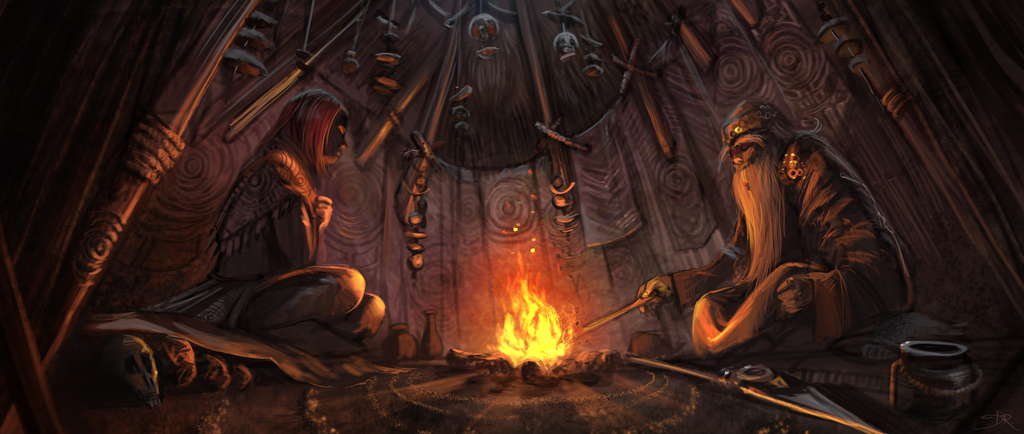
The Way of the Shaman
If you answered yes, then you are in luck, because the path to bringing magic into everyday life is well known. This path is embedded in our collective memory — so deeply, in fact, that I would wager if an alien race wiped our minds and all records of our human history, we would find our way back to the path of the shamanic experience.
If you trace back the cultural heritage of every race of people on Earth, you would find that every culture had their shamans — healers, counselors, teachers, spiritual guides. The earliest archaeological evidence of shamanic practices dates back to Paleolithic cave paintings that are over 30,000 years old — long before the dawn of civilization, when humans lived every day immersed in nature. This is also around the time to which scientists have dated the oldest remains of an undisputed shaman.
As nomadic hunter-gatherers traveled in pursuit of resources, interacting tribes exchanged customs and beliefs, which could account for the uncanny similarities in shamanic beliefs and practices across vast expanses of land and sea. Due to its proliferation, some anthropologists even claim that every major religion can trace its origins back to shamanic roots.
And yet, after having morphed, becoming estranged, and being nearly lost, shamanic practices are reemerging in mainstream alternative spirituality with growing momentum. Many describe this return to shamanic origins as a feeling of “coming home” in their spiritual practice, suggesting something innate in human nature that compels us to return to an earth-based spirituality.
“Any tradition that doesn’t adapt and change with the times, to bring its wisdom to the next generation, will eventually lose touch and meaning with those it seeks to help.”
— Christopher Penczak, The Temple of Shamanic Witchcraft
However, we have evolved too much to simply “go back.” We don’t hold the same superstitious beliefs as our early ancestors about what causes natural disasters and epidemic illness and infertility because we have developed our science and technology to the point that we know the biological and geological origins of such phenomena. Hence, shamanic practice is evolving with us, updating to modern times and adapting to remain relevant to a species that now changes dramatically with every new generation.
And so, the way of the modern shamanic practitioner is still a path filled with magic — but it is magic grounded in knowledge of science and human psychology.
The modern shamanic practitioner embraces facts but remains open to infinite possibility. She merges the ancient with the new, the sacred with the mundane, the individuation of the self with the needs of the larger community.
A shaman is “one who knows,” “one who sees in the dark,” “one who walks between the worlds.”
The way of the shaman is the way to unlocking the magic in all things.
The Shamanic Perspective
Much of shamanism is unspeakable. A truly shamanic experience will transport the individual to a place outside of time, granting wisdom and insight that can never fully be put into words. Thus, the paradox in writing about shamanism.
Lucky for us that we never back down from a challenge, no? Of course, we can only cover so much ground in a brief article, and even if I were to expand this content into a book, we would still only manage to scratch the surface of what takes a lifetime (or even lifetimes upon lifetimes) of study to fully understand. So, while the shamanic perspective is a rich, multi-faceted way of looking at the world, for our purposes now, I will be focusing on the three major aspects at its core:
- Mysticism
- Healing
- Being of Service to Others
Let’s dig in.
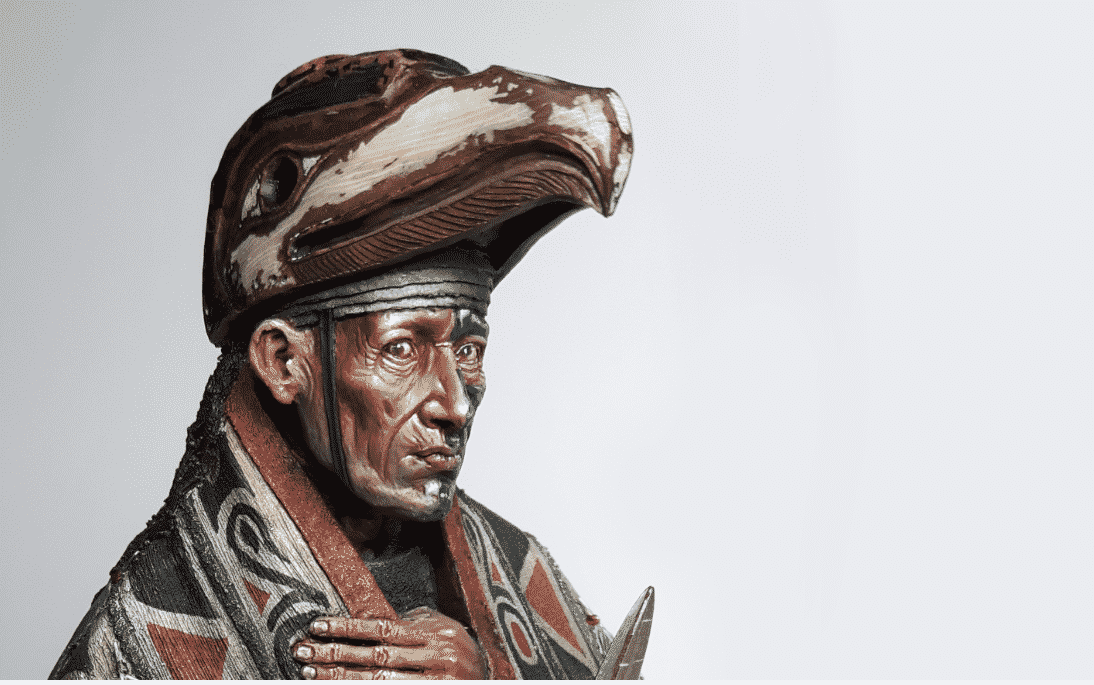
1. Mysticism
Have you ever had a mystical experience? It’s a moment that pulls you out of yourself, out of your ego, beyond the carefully constructed personality mask you wear every day — and yet, you somehow find yourself more present in that moment than during any other experience. You become acutely aware of the sights, sounds, smells, colors, textures all around you.
But more than that, there’s a feeling, a feeling that you are a part of something bigger than yourself, that you are profoundly connected to the people and the Earth around you. This connection brings you joy — no, ecstasy — along with radiant peace, a sense that all is right in the world.
The mystical experience is the heart of the shamanic path.
For the truly shamanic individual, life is not constructed of mystical moments and non-mystical moments; rather, life IS one great mystical moment.
Everything ripples with the magic and the mystery of creation.
Where did we come from? Yeah, the Big Bang, but like, what made that? Where did all the material within the singularity come from in the first place? Scientists say that matter is eternal, but come on, we all know that nothing is ever just “always there.” Someone, or some force, had to have made all this.
And they did a damn good job, when you really think about it.
From the shamanic perspective, the intelligence of nature and evolution is not a lucky coincidence, but an intentional process designed by a greater “mind.” Nature is a grand game of checks and balances. For every evolutionary problem, there is an adaptation. For every prey, a predator. For every disease, a remedy. Within the natural course of things, every imbalance in nature finds a new balance in due time.
You’ve got to respect the thoroughness and perfection of the design, and when that respect deepens into reverence, everything this Grand Artist has created shines with the light of the sacred.
This way of seeing is not beyond the grasp of the modern individual. You need only sit outside and watch the sunset, and wonder how many other people are watching the same sunset as you, and contemplate how old the sun really is, and how big, and how far away, and what a miracle it is that we are perfectly situated in our solar system for the sun to be hot enough — but not too hot — to generate and support the life on our planet, to have a profoundly mystical experience. Not bad for a Tuesday night, eh?
However, traditional shamans go even deeper in their sacred worldview.
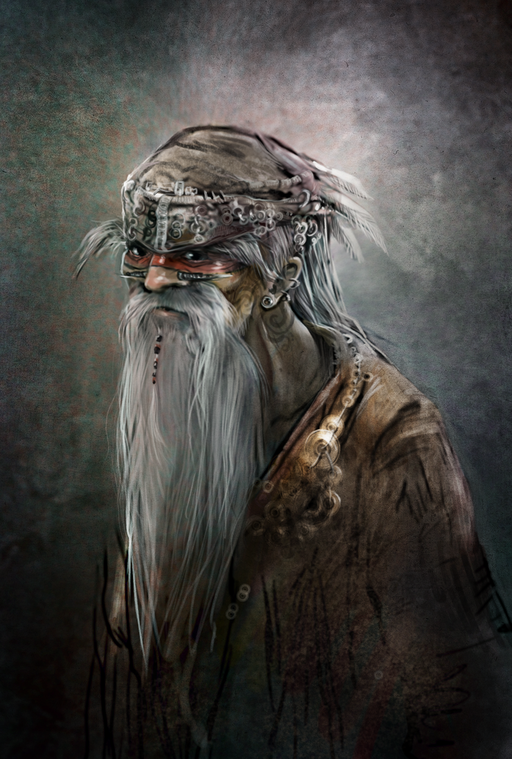
Imagine the most talented, most badass artist that you can think of. We’ll say this artist is a painter. Now, what if that artist not only painted astounding visual images on canvas, but also went through the trouble of making their own paints and stretching their own canvases?
They don’t just buy pigments and wood frames and canvas — no, this super saiyan artist goes and gathers the herbs and minerals to create the pigments, cuts the tree and sands the wood, prepares the fiber to make the canvas.
Moreover, this artist harvests materials they planted and cultivated themselves, and if you trace it back far enough, they also created the ground in which they planted those initial seeds, they created the space in which this round rock of earth floats, and the water, and the elements and atoms that make those up, too. When you really go back far enough, this Artist created everything — where there was nothing, they took of their own being to create it all.
If this were true, what newfound respect would you have for the painting? The artist didn’t just create the painting, but created the materials of their own living essence. If the materials were made from the Artist’s own magical “body,” wouldn’t the materials be magic, too?
This is how the shaman sees the world. The Artist is the mysterious creator behind all of existence, and this Earth, this universe, we people, are the painting. And just like the magic materials, we, too, hold the magic of the creator within our very cells.
Traditional shamans perceive this magic as spirit: Because everything is infused with the divine essence of the Creator, all of creation contains divine consciousness, as well (a concept called “animism”). This consciousness comes in various forms (plants, animals, minerals, natural elements, humans, aliens, etc.) and communicates in different ways (spoken language, howling, meowing, sprouting, raining, osmosis, etc.). The role of the shaman is to translate the wisdom of all forms of communication for a deeper understanding of the world and, by extension, the divine mind.
The deeper world of the shaman is a world of nature spirits, of deities, of demons, of ghosts, of plant and animal teachers. This is a worldview born of a deep, profoundly intimate connection with nature and the divine.
Now, I promised that you wouldn’t have to drastically alter your worldview to bring the magic of the shamanic perspective into your everyday life. So, take a deep breath for me, because I’m not here to try to convince you that everything that goes wrong in your life is the work of immortal, interdimensional demons who are out to steal your soul. (I mean, it might be true, I don’t actually know your situation.) But, that aside, let’s talk about how the mystical shamanic perspective can work for you right now.
- Practice mindfulness. As often as you can throughout your day, take a few moments to be fully present in the experience of your life. Cherish the sensations. Be grateful for all that you have.
- Recognize the interconnectedness of all life and existence. Your choices have consequences. The paper towels you use to dry your hands were once living trees. The clothes you wear were probably made by someone living on the other side of the world — and that person has their own life with their own experiences of pain and beauty, too. The interaction you have with the barista who prepares your coffee in the morning could set the tone for the rest of their day, or even week. You make an impact on this planet, and it is up to you whether you leave the world a better or worse place for having existed.
- Remember that there is more to this world than the mundane, materialist society we must navigate in modern life. Seek the deeper reality. Find moments of spiritual connectedness everywhere — especially when you are in the beautiful, chaotic mess of this day and age. Recognize the plants and animals around you, even the more “common” ones — pigeons, sparrows, crows, squirrels, dandelions, house plants, sidewalk trees. Have you forgotten how close to the natural world you are every day? It’s right there, always, just within reach, if you only take the time to notice.
- Treat everything as sacred. How differently would you see people and mundane objects if you truly believed they were all infused with the same divine essence of the mysterious Artist behind all of existence? How differently would you treat yourself if you recognized the divine spark within you? What if every “bum” and “junkie,” every internet troll and office gossiper, were angels in disguise? “What if God was one of us?” What if every kitchen knife, every pillowcase, every yellow highlighter was actually a tool infused with magic powers of creation and destruction? What if you were God? Just kidding, don’t think that. Stay humble.
- Recognize the miracle that life truly is. Appreciate the beauty and intricacy of nature’s design. Hike the forests and mountains and soak it all in. Learn about the natural world, about weather patterns and ecosystems. Explore the fathomless depths of your own mind.
- Ponder the following: If it is true that matter can neither be created nor destroyed, then it follows that someone or something with powers that transcend the laws of physics and quantum physics must have created everything from nothing. BUT, what created that? Who made “God?” How are we even here? We shouldn’t exist. Are we really real? Is this just a dream? How can the dream even be dreamt unless the dreamer is definitely real? When you’ve put your brains back in your head, email me. I’m curious to see what you think. If you’re even real.
There is no limit to how many ways you can find to incorporate the mystical element of the shamanic perspective into your worldview. Like anything else, cultivating a mystical outlook on life takes practice, but with the right mindset, you can bring magic into your everyday life.
2. Healing
“The shaman is not merely a sick man, or a madman; he is a sick man who has healed himself.”
— Terence McKenna
The next core aspect of the shamanic perspective comes from the shaman’s most important role: healing.
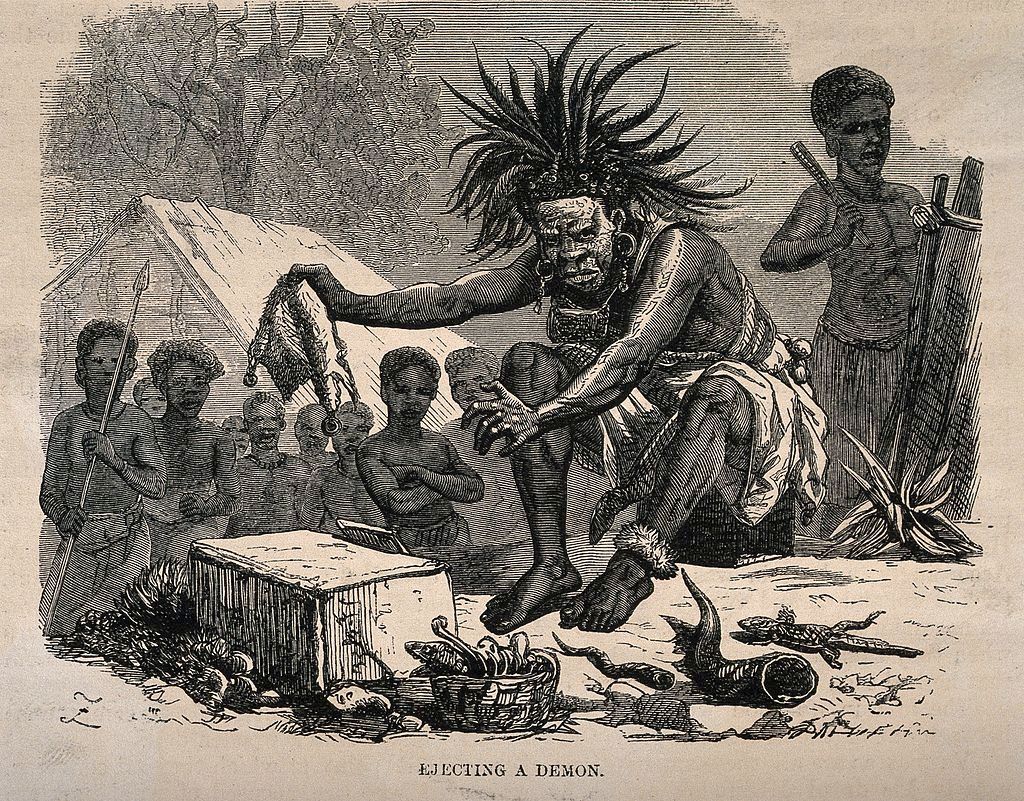
If we still lived in tribal communities, the shaman would be the one you would go to when you have a problem. He or she would listen to your issues and give advice, recommend actions to take, and administer medicine. The medicine could range from herbal concoctions to folk magic remedies, special dietary changes, or spiritual rituals. Sometimes, listening with compassion would be all the medicine needed.
“The dangerous crises of self-development are permitted to come to pass under the protecting eye of an experienced initiate in the lore and language of dreams, who then enacts the role and character of the ancient mystagogue, or guide of souls, the initiating medicine man of the primitive forest sanctuaries of trial and initiation. The doctor is the modern master of the mythological realm, the knower of all the secret ways and words of potency. His role is precisely that of the Wise Old Man of the myths and fairy tales whose words assist the hero through the trials and terrors of the weird adventure.”
— Joseph Campbell, The Hero with a Thousand Faces
Today, we have healers who specialize in different aspects of the human being. We have general practitioners, specialists, psychotherapists, and spiritual counselors. The shaman, on the other hand, was all in one.
Although science is a marvelous thing that has improved our lives in countless ways, one of the unfortunate side effects of modern scientific thought is the way our healers now treat humans as mechanistic collections of parts rather than as one whole being. Shamans recognize the mind-body-spirit connection, enabling them to treat their patients holistically.
Before a shaman can treat others, however, he or she must first learn how to heal him-/herself. Though not everyone contracts the same diseases throughout their lifetimes, we all do share the same experiences: fear, trauma, heartache, loneliness, grief, illness in general. One of the oldest shamanic archetypes is that of the wounded healer — one who has been wounded discovers the cure for their ailment and is then able to help heal others who receive the same wound.
So, the trick to incorporating this aspect of the shamanic perspective into your everyday life is extremely straightforward: heal yourself. Here are some ways you can work through your own unique healing journey in a modern way.
- Self care. Take the time to attend to your own needs. Get enough rest, take baths and long walks, adopt a daily spiritual practice, give yourself permission to unplug from the outside world on a regular basis. You can only help others when you are in a healthy place yourself.
- Shadow work. Luckily, I’ve written an entire essay on this. Recover the fragmented aspects of yourself that have been buried, repressed, or rejected, and then incorporate those into your ego consciousness in a healthy and balanced way. (In shamanism, this is a called a “soul retrieval.”)
- Diet & exercise. Eat healthy, whole foods. Get outside and exercise for at least 30 minutes every day. There is a wealth of research on this topic, so I won’t go into detail. But consider that we came from ancestors who spent 100% of their lives outside, exercising daily, eating only whole, unprocessed foods. In essence, we are made of and were formed by those things. We need them in our lives more frequently than we have them now.
- Journal. Examine what’s going on inside of you. Look for patterns, identify what makes you happy and unhappy, and make the necessary changes. Pay attention to your dreams; they are messages from your unconscious mind, which holds the keys to your healing.
- See a therapist or spiritual counselor. If you can make it happen, talking to a therapist can help you to find perspective on your life and work through your issues in a healthy way. Unlike friends and family, who love you and want to have your back no matter what, a therapist will encourage you to see when you are acting out patterns of pain from your past, when you are stuck in a victim mentality, when you are being overly aggressive, and all those other little things that we need someone to tell us honestly and with integrity.
- Create art. Stepping outside of your everyday existence and into the world of imagination can free you in ways that little else can. When you create, you communicate to yourself and others what is going on inside of you. You can find catharsis, understanding, freedom, and joy, all when you create something from the purest place within yourself.
- Seek the lessons in everything. When you shift your perspective to see pain and misfortune as opportunities for growth and healing, you’ll find that you suffer less. That doesn’t mean that painful things hurt less, per se, but the amount of time you suffer will be shorter because you will pull your mind out of the suffering and focus on moving forward with the lessons you have learned. This is the essence of spiritual alchemy, of transforming pain into enlightenment.
And, above all, remember that the healing journey is one with no destination. Do not try to reach a place where you are fully healed, where there is no more pain and you are a fully realized, enlightened being. True growth only comes through adversity. While you can minimize and perhaps even eliminate your experience of suffering, as long as you are alive, you hold within you the potential for unlimited growth through your human experience — an experience steeped in both pain and beauty. Don’t try to avoid experiences and relationships only because you are afraid of pain (within reason, of course), but try to accept that life will always hold pain, and embrace it along with the infinite light and joy and love that are available to you.
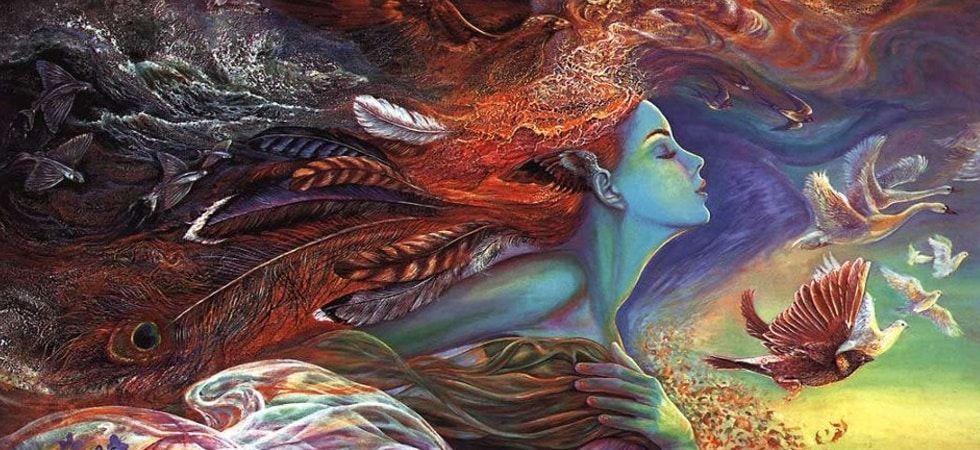
3. Being of Service to Others
The final aspect of the shamanic perspective that we will examine today is closely related to the other two: being of service to others. Within their tribes, shamans perform many roles, all in the spirit of service to their communities. They heal individuals, yes, but they also work to heal the tribe as a whole, ensuring that everyone’s needs are met and that no one is left behind.
With their wisdom, they serve as counsel to the tribal leadership. They perform rites and services, such as weddings, funerals, and rites of passage, to maintain tribal morale and to tend to the spiritual health of the community. They use their powers of divination to foresee dangers to the tribe, to locate food and other resources, and to find solutions to tribal problems. When the situation is dire, they devote themselves to prayer and ritual, summoning their inner power and the powers of nature and the divine to bring a peaceful resolution to the problem.
Above all, shamans dedicate themselves to the well-being of not only the tribe, but the planet itself, Mother Earth and her many children.
As you cultivate the mystical perspective that we are all connected and all sacred beings, and as you work through your own unique healing journey, you will find that coming to the aid of others is a natural progression in your worldview.
“Integral to shamanism in any form, or archetypal shamanism in general, is being of selfless service to the needs of the tribe.”
— Andrew Carmago, The School of Modern Soul Science
Healing and mysticism breed the things that we need on this planet most of all: empathy and compassion. Through cultivating these divine traits, we not only reach towards our highest potential as spiritual beings, but we can also bring profound healing to our planet.
At this moment in time, our planet and the creatures who inhabit it are suffering tremendously.
Millions of acres of forest are lost to agriculture and other industry, dislocating animals from their homes, contributing to the mass extinction of species, and dramatically altering global climate patterns.
Millions of humans are dying of poverty and preventable diseases. So many are living in war zones that are so violent, psychologists predict it will take multiple generations to recover from the trauma.
Within developed societies, the homeless, the mentally ill, and the addicts are outcast and neglected.
Even the “average” person is prone to feelings of alienation from society and profound loneliness. In the United States, suicide rates climb every year as depression deepens; the social stigma around mental illness prevents us from speaking up about our internal pain, thus creating a stranglehold on basic human connection. People feel disconnected from the world and the people around them — and, worst of all, from themselves.
Adopting a shamanic perspective is not the only way to address these issues, but it is one very beautiful, very primal, very profound way. Had we maintained a shamanic perspective as we developed, emphasizing our interconnectedness with nature, our commitment to healing mind, body, and spirit, perhaps the planet’s situation wouldn’t be so dire. We could spend countless hours picking through the wreckage, debating whether we are in an apocalyptic age or a golden one, but that’s not really the point.
While there are beautiful things about this time, we can’t use those as an excuse to gloss over the horrors. As human beings, and especially as shamanic individuals, we have a duty to take care of each other and the planet. This sense of selfless service requires a deep humility that does not come naturally to a culture built on competition and materialistic views of success.
However, developing a spiritual ego without humility is almost as dangerous as having no sense of spirituality at all. You may climb to the heights of mystical experience, unlocking the secrets of the cosmos and seeing other worlds of supreme beauty and imagination, or perhaps simply come to know yourself intimately and work through years of trauma and suffering. However, without a deep sense of compassion and empathy, your spiritual attainment will be hollow, and perhaps even false.
So, while humility and service may not come naturally, we must strive to cultivate a sense of duty towards helping others. True love requires this of us. We cannot look away when we see others suffering, because their pain hurts us, too.
In traditional cultures, there is a strict taboo against shamans referring to themselves as “shamans.” They believe that in doing so, they will lose their powers. This cautionary tale is about keeping the ego in check, about serving humbly without expectation of reward or praise. In Hinduism, this concept is known as “karma yoga,” performing work selflessly, as an offering to the divine.
So ask yourself, is this something you can do? Can you lose yourself in service to others? Do you dare to love that fully? Will you dive deep enough into yourself to find the “yes” within you? It is there, buried beneath layers of fear, of pain, of resistance. If the shamanic journey had a final destination, getting to that place of “YES” would be it — saying yes to life, yes to love, yes to healing, yes to being of service to others, yes to being one with the divine.
Walking the shamanic path is an act of affirmation. It is a path of light in a world shrouded in darkness, hope in a world that knows so much pain and fear.
And, when you can find it within yourself to be fully open, in spite of all that you’ve experienced, to heal yourself even when it hurts to go on, to love deeply and to offer yourself in service to the broken heart of humanity, that is the most beautiful magic of all.
Further Study
If you find the subject of shamanism intriguing, there are a number of wonderful books and other resources that go into more depth on the subject. You can start with the list below, though your studies will no doubt lead you to numerous other works along the way:
The Way of the Shaman – Michael Harner
Shamanic Journeying: A Beginner’s Guide – Sandra Ingerman
Shamanism: Archaic Techniques of Ecstasy – Mircea Eliade
The Temple of Shamanic Witchcraft – Christoper Penzcak
The Archaic Revival – Terence McKenna
The School of Modern Soul Science – Andrew Carmago (Online Course)
Above all, it is important to remember that the shamanic perspective is not ultimately one that can be taught in books or webinars, but must be learned through experience. Teachers can open your mind to the possibilities, but it is up to you to change your perspective and come to see the world with sacred eyes. In the end, you will find that the best magic is that which we create for ourselves, for it is that magic that will never again be lost, but will remain with us for the rest of our lives.

Jack E Othon
Jack E is the creator of Radically Enlightened, a blog dedicated to expanding global consciousness. Insta - https://www.instagram.com/jeothon/










